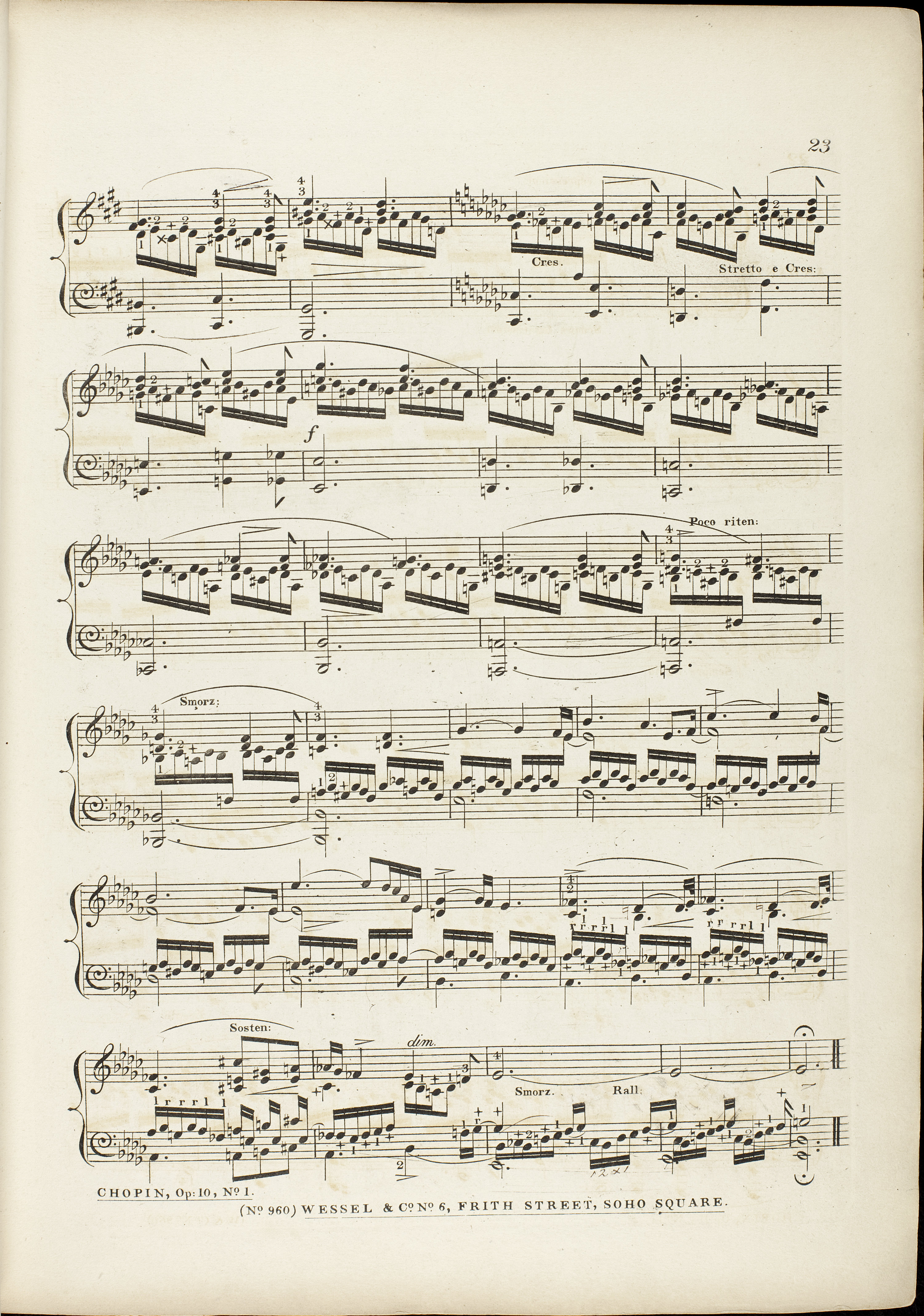



The given in the main text fingering of bar 51 was added by Chopin in a proofreading of FE (→GE1→GE2). Apparently, the deletion of the '2' digit (in ink) visible in FE should be understood as the '1' digit and this is the interpretation we include in the main text as a variant suggestion. The copy includes other signs (in pencil), which are probably also '1's over the 7th and 12th semiquavers in bar 51 and the 1st one in bar 52. However, the signs could be interpreted in another way, e.g., as an indication of performance with the R.H., therefore, we do not include them in the main text. In EE2 the final fragment of the Etude was provided with additional fingering and indications for the division between the hands contrary to the one written by Chopin. In EE3 (→EE4) those indications were removed, and four digits were added in bar 51.
Compare the passage in the sources »
category imprint: Differences between sources
issues: Annotations in teaching copies, EE revisions, Inaccuracies in GE, Annotations in FES, Authentic corrections of FE
notation: Fingering








